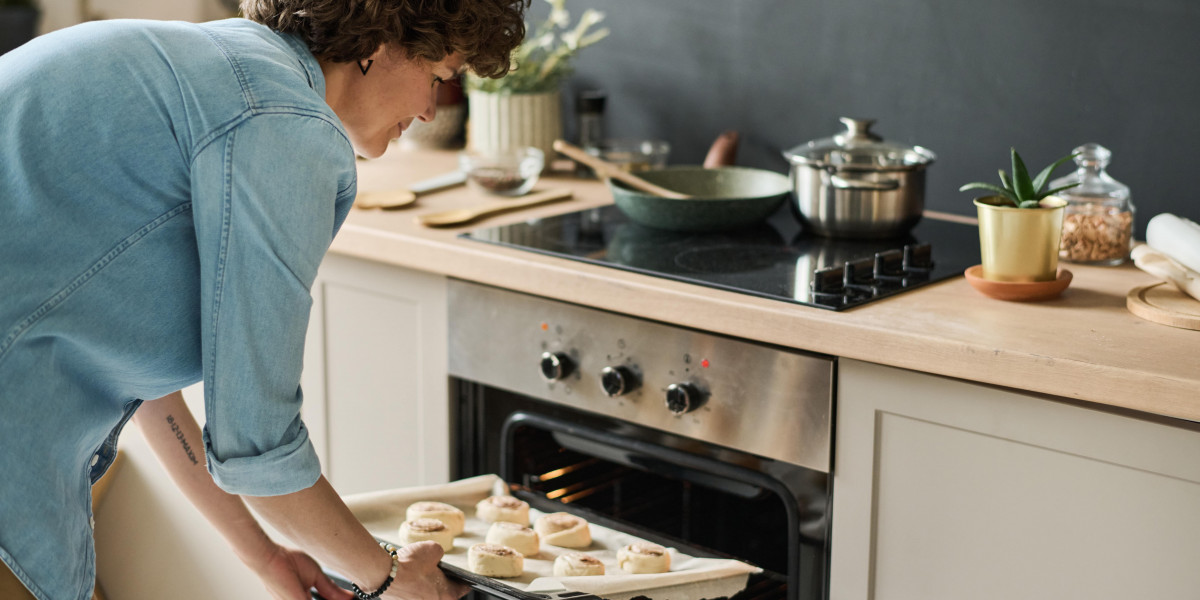The Ultimate Guide to Kitchen Built-In Ovens: What You Need to Know
When it pertains to modern kitchen areas, the built-in oven is more than just a device; it is a statement of design, efficiency, and functionality. Built-in ovens are designed to incorporate seamlessly into cabinetry, providing a sleek look that boosts the overall design of the kitchen. This post checks out the numerous types, benefits, and factors to consider of kitchen built-in ovens, and offers insights to assist you make an educated purchasing choice.
Tabulation
- What is a Built-In Oven?
- Kinds Of Built-In Ovens
- 2.1 Single Ovens
- 2.2 Double Ovens
- 2.3 Steam Ovens
- 2.4 Wall Ovens
- Advantages of Built-In Ovens
- Secret Features to Look For
- Installation Considerations
- Often Asked Questions
- Conclusion
1. What is a Built-In Oven?
A built-in oven is an oven designed to be installed within kitchen cabinetry instead of as a freestanding system. This style permits higher aesthetic flexibility while making the most of available kitchen area. Built-in ovens can be found in various sizes and setups, dealing with diverse culinary needs and kitchen styles.
2. Kinds Of Built-In Ovens
Understanding the various kinds of built-in ovens can help customers select the right one for their kitchen setups and cooking styles.
2.1 Single Ovens
Single ovens are compact and created to fit within basic cabinet widths. These ovens typically supply adequate space for daily cooking needs, such as baking or roasting. They come in various electric or gas designs and are typically user-friendly with straightforward controls.
2.2 Double Ovens
For people who frequently host large events or take pleasure in cooking multi-course meals, double ovens can be a lifesaver. These systems consist of two different oven compartments and deal increased cooking capability, enabling simultaneous baking or roasting at various temperatures.
2.3 Steam Ovens
Steam ovens use steam to cook food, which helps maintain moisture and nutrients. These ovens are significantly popular amongst health-conscious people and premium cooks. Steam ovens can be built-in along with conventional ovens for a flexible kitchen setup.
2.4 Wall Ovens
Wall ovens are designed to be set up within a wall instead of under counter tops. They provide convenient access and can be integrated with other wall-mounted kitchen appliances. Wall ovens might be readily available as single or double systems.
3. Advantages of Built-In Ovens
Going with a built-in oven features various benefits:
- Space Efficiency: Built-in ovens can be tucked into cabinets, maximizing important kitchen space.
- Visual Appeal: They provide a cleaner, more contemporary appearance than basic freestanding ovens.
- Variety of Designs: Built-in ovens are available in multiple finishes, consisting of SA4544CIX Stainless Steel Electric Oven - Buy Now!-steel, SIA 60cm Black Built-In Multi-Function Oven, and white, enabling integration with different kitchen designs.
- Boosted Functionality: Many built-in ovens come equipped with innovative features such as self-cleaning modes, touch screens, and convection technology.
4. Secret Features to Look For
When selecting a built-in oven, consider the following functions to boost cooking functionality:
- Temperature Range: A more comprehensive temperature range permits greater adaptability in cooking different dishes.
- Self-Cleaning Options: Look for designs that offer self-cleaning abilities to save time and effort on maintenance.
- Convection Cooking: Convection ovens distribute air to cook food equally and quickly.
- Wi-Fi Connectivity: Some contemporary built-in inbuilt ovens featured Wi-Fi capability, enabling users to manage settings or preheat the oven remotely.
- Safety Features: Check for functions like automatic shut-off, kid locks, and cooling systems to guarantee optimum safety.
5. Setup Considerations
Before buying a built-in oven, specific setup factors need to be addressed:
- Size and Dimensions: Ensure the chosen oven fits the designated area. Procedure the height, width, and depth of the designated setup area.
- Ventilation: Gas ovens need adequate ventilation to ensure security. Speak with a professional if necessary.
- Electrical Requirements: Check the electrical requirements of the selected unit to make sure compatibility with existing outlets.
- Professional Installation: If you're not experienced in appliance installation, it might be a good idea to look for professional assistance to ensure proper fitting and compliance with local codes.
6. Often Asked Questions
Q1: How do built-in ovens vary from freestanding ovens?A: Built-in ovens are installed in kitchen cabinetry for a smooth appearance, while freestanding ovens stand alone and do not require built-in installation.
Q2: Can you install a built-in oven yourself?A: While some individuals with experience may pick to install an oven themselves, it is usually recommended to employ an expert to guarantee hotpoint newstyle electric Double oven - sleek black or gas connections are safely installed. Q3: Are built-in ovens energy-efficient? A: Many built-in ovens feature energy-saving technology and are often more efficient compared to older designs. Constantly check energy rankings before purchasing. Q4: Do built-in ovens require unique maintenance?A: Regular upkeep includes keeping
the interior clean and looking for any wear and tear. Self-cleaning best fit their cooking design and design choices. Whether an experienced chef or a home cook, the advantages of selecting a built-in oven are clear. By thinking about the details outlined in this guide, individuals can make educated decisions that will result in years of cooking enjoyment. Additional Resources For further information on kitchen appliances, consider taking a look at the list below resources: Consumer Reports: Product evaluations and purchasing guides. Energy Star: Energy-efficient device recommendations. Home Improvement Stores: Local specialists can provide additional insights and recommendations. Embarking on a kitchen renovation or upgrade can be
designs can streamline this job significantly. Q5: What is the typical life-span of a built-in oven?A: The average life-span of a Cookology 60cm Built-in Electric Fan Oven - Reliable Cooking oven is generally between 10 to 15 years, depending on use and upkeep practices. 7. Conclusion Buying a built-in oven can boost both the performance and visual appeals of your kitchen. With different types and features offered, customerscan pick designs that







